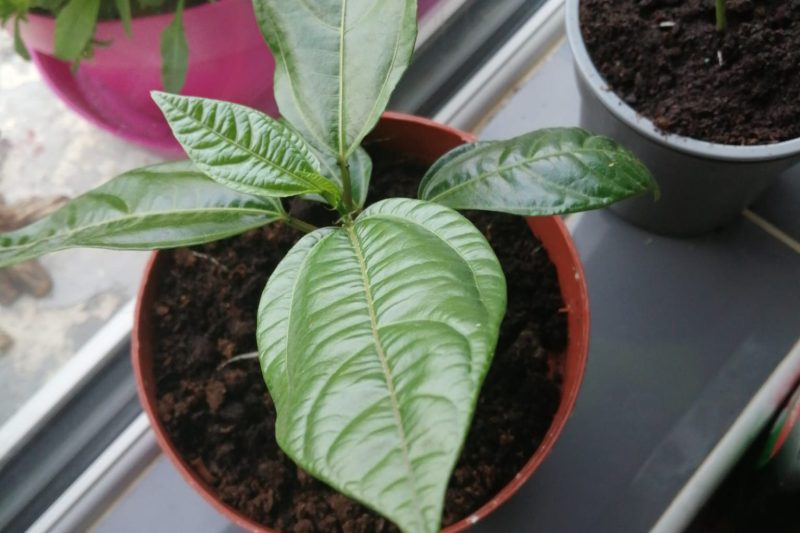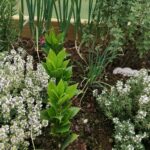Grow your own vegetable




Grow your own vegetable.
Growing your own vegetables is a great way to improve your health, save money, reduce your environmental impact, and enjoy the many emotional benefits of gardening.
First all I am proud to say that I grow my own vegetables for years, we love to have fresh greens, and have every year lovely strawberries, blackcurrant, gooseberry, apples, pears, blueberries tomato and much more. Is so blessed to have herbs all year round, is a great way to enjoy fresh, nutrient-rich food right at home, is a great way to add flavour to all my meals without having to rely on store-bought herbs that may not be as fresh. All the pictures in my blog are from my own garden.
Grow herbs in your window.
You can grow a thriving herb garden in pots on your windowsill, even if you have limited space. Herbs grown in pots can be used fresh in cooking and baking, and they also make great gifts for friends and family.
Starting to grow herbs in your window is a fun and easy project! Here are some steps to get you started:
- Choose your herbs: Select the herbs you want to grow. Some good options for windowsill herb gardens include basil, parsley, mint, thyme, oregano, and chives.
- Select your pots: Choose pots that are the appropriate size for the herbs you want to grow. Be sure to choose pots with drainage holes to prevent water from accumulating at the bottom.
- Choose the right soil: Use a high-quality potting mix that is specifically formulated for herbs. Avoid using garden soil, which can be too heavy and may contain pests or diseases.
- Place your pots in a sunny window: Herbs need at least 6 hours of sunlight per day, so place your pots in a sunny window that faces south if possible. If you don’t have a sunny window, consider using artificial lighting to supplement the natural light.
- Water your herbs regularly: Herbs in pots can dry out quickly, so water them regularly to keep the soil moist but not waterlogged. Water the herbs when the top inch of soil feels dry to the touch.
- Fertilize your herbs as needed: Herbs benefit from regular fertilization, especially if they are grown in containers. As a said in my previous blog, my fertilize is made from banana skin.
By following these simple steps, you can start growing your own herbs in your window and enjoy fresh herbs all year round!
You can start grow vegetable in a small greenhouse in the back of your garden.
Growing vegetables in a small greenhouse can be a great way to extend your growing season and protect your plants from pests and harsh weather conditions. Here are some tips for getting started:
- Choose the right location: Select a location for your greenhouse that gets plenty of sunlight and is protected from strong winds. You’ll also need access to water and electricity for your greenhouse.
- Choose the right size: Select a greenhouse that is the appropriate size for your needs. A small greenhouse can be a good option if you have limited space or are just getting started.
- Choose the right vegetables: Select vegetables that are well-suited for greenhouse growing. Good options include tomatoes, cucumbers, peppers, lettuce, spinach, and herbs.
- Use the right soil: Use a high-quality potting mix that is formulated for vegetable gardening. This will provide your plants with the nutrients they need to grow healthy and strong.
- Provide plenty of ventilation: It’s important to provide your greenhouse with good ventilation to prevent overheating and disease. You can use fans or vents to circulate air and regulate temperature.
- Water regularly: Vegetables in a greenhouse need to be watered regularly to keep the soil moist but not waterlogged. Use a watering can or hose to water your plants as needed.
- Fertilize as needed: Vegetables in a greenhouse benefit from regular fertilization. Use a balanced fertilizer every 4-6 weeks or use a slow-release fertilizer that can last for several months. As a said in my previous blog, my fertilize is made from banana skin.
By following these tips, you can grow a thriving vegetable garden in your small greenhouse and enjoy fresh, healthy produce all year round!
Are you a beginner?
As a beginner, it’s a good idea to start with easy-to-grow vegetables that are relatively low-maintenance and have a good chance of success. Here are some great options for beginner vegetable gardeners:
- Tomatoes: Tomatoes are one of the most popular vegetables to grow and are relatively easy to care for. They thrive in warm, sunny locations and require regular watering and fertilization. You can grow them in pots, containers or in the ground.
- Radishes: Radishes are quick-growing and easy to care for. They can be grown in almost any type of soil and prefer cool temperatures. They are great for container gardening or small plots.
- Lettuce: Lettuce is a cool-weather crop that can be grown in the spring and fall. It’s easy to grow and can be planted in pots or containers, or directly in the ground. It’s a great addition to salads.
- Green beans: Green beans are another easy-to-grow vegetable that can be planted directly in the ground or in containers. They prefer warm temperatures and regular watering.
- Zucchini: Zucchini is a fast-growing and prolific vegetable that’s perfect for beginners. They need a lot of space to spread out and prefer warm temperatures and regular watering.
- Herbs: Herbs are easy to grow and require minimal care. Some good options for beginners include basil, parsley, thyme, and oregano. They can be grown in pots or containers on a windowsill or outside.
By starting with these easy-to-grow vegetables, you can gain confidence in your gardening skills and enjoy the satisfaction of growing your own food!
Find your local Garden centre for seeds, crops and plants.



To find your local garden centre for seeds and crops, you can start by doing a quick online search using your preferred search engine. You can use keywords such as “garden centres near me”, “garden centres in [your city/town]”, or “garden centres selling seeds and crops”. This should give you a list of local garden centres in your area.
Here are some additional tips to help you find the right garden centre:
- Check for online reviews: Look for online reviews or testimonials from other customers to get an idea of the quality of the garden centre’s products and services.
- Look for a variety of seeds and crops: Make sure the garden centre carries a wide selection of seeds and crops, including the ones you’re interested in growing.
- Ask about their expertise: Find out if the garden centre has knowledgeable staff who can answer your questions and provide advice on gardening.
- Check for any promotions or discounts: Some garden centres may offer promotions or discounts on certain products, so be sure to ask if there are any current specials.
- Visit the garden centre in person: If possible, visit the garden centre in person to see the products and speak with the staff.
By using these tips, you should be able to find a local garden centre that carries the seeds and crops you need for your garden and get the advice and support you need to get started.
There are many advantages to growing your own vegetables:
- Freshness: You can pick your vegetables at the peak of ripeness, ensuring that you’re getting the freshest produce possible. This means your vegetables will be more flavorful and nutritious than store-bought vegetables that have been picked early and shipped long distances.
- Control over pesticides and fertilizers: When you grow your own vegetables, you have control over the type and amount of pesticides and fertilizers used. This means you can avoid potentially harmful chemicals and use organic or natural methods instead.
- Cost savings: Growing your own vegetables can be a cost-effective way to enjoy fresh produce. While there may be some initial costs to set up your garden, over time, you’ll save money by not having to purchase expensive organic produce at the grocery store.
- Health benefits: Gardening is a great form of exercise and can be a stress-relieving activity. Additionally, eating a diet rich in vegetables has been linked to numerous health benefits, including a reduced risk of chronic diseases like heart disease, diabetes, and cancer.
- Sustainability: Growing your own vegetables is a sustainable practice that can help reduce your carbon footprint. By reducing the distance your food travels and avoiding harmful chemicals, you’re helping to protect the environment.
Overall, growing your own vegetables is a rewarding and fulfilling activity that can provide numerous benefits for both you and the environment.
















